
- •CONTENTS
- •PREFACE
- •Pencils
- •Papers
- •Accessories
- •Holding the Pencil
- •Pressure
- •Movement of the Hand
- •Lines and Strokes
- •Introduction
- •Observation and Recording
- •Landscape Sketching
- •Trees
- •Trees in the Foreground
- •Trees in the Background
- •Landforms
- •Water
- •Architecture
- •Sketching the Cityscape
- •SKETCHING FROM MEMORY
- •EXAMPLES
- •INDEX


PENCIL SKETCHING
Second Edition

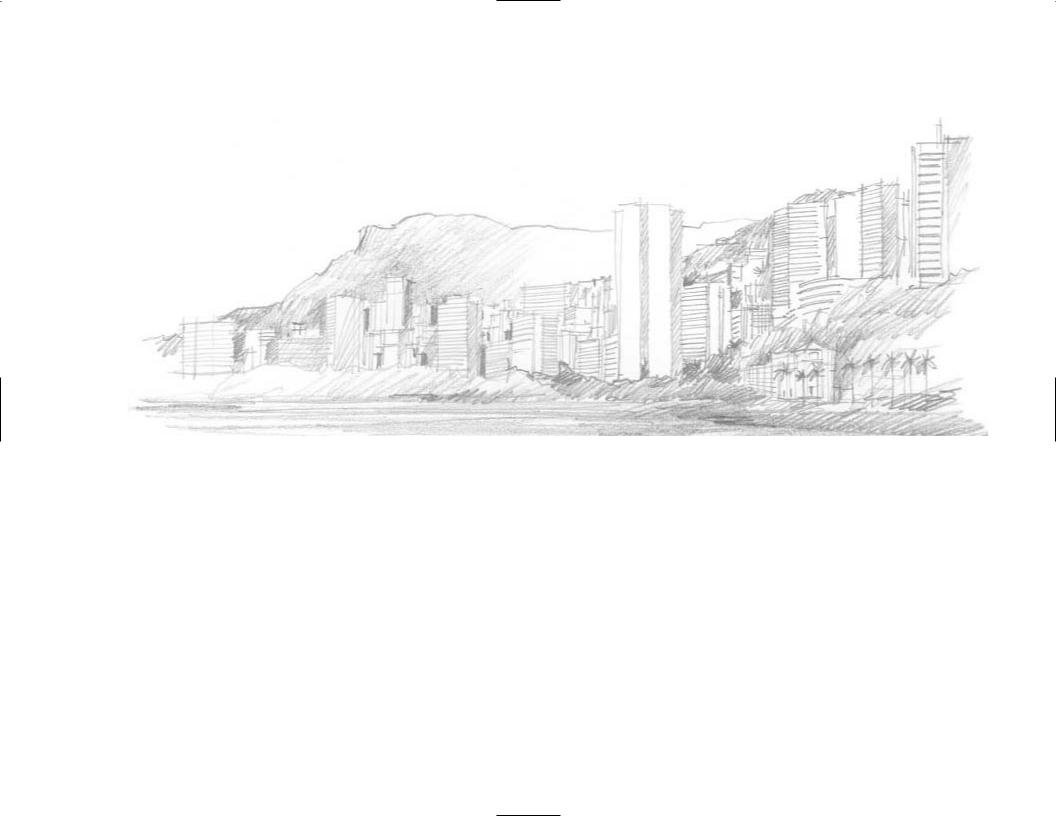
PENCIL SKETCHING
Second Edition
Thomas C. Wang
John Wiley & Sons, Inc.

Copyright © 2002 by John Wiley & Sons, Inc., New York. All rights reserved.
No part of this publication may be reproduced, stored in a retrieval system or transmitted in any form or by any means, electronic, mechanical, photocopying, recording, scanning or otherwise, except as permitted under Sections 107 or 108 of the 1976 United States Copyright Act, without either the prior written permission of the Publisher, or authorization through payment of the appropriate per-copy fee to the Copyright Clearance Center, 222 Rosewood Drive, Danvers, MA
01923, (978) 750-8400, fax (978) 750-4744. Requests to the Publisher for permission should be addressed to the Permissions Department, John Wiley & Sons, Inc., 605 Third Avenue, New York,
NY 10158-0012, (212) 850-6011, fax (212) 850-6008, E-mail: PERMREQ @ WILEY.COM.
This publication is designed to provide accurate and authoritative information in regard to the subject matter covered. It is sold with the understanding that the publisher is not engaged in rendering professional services. If professional advice or other expert assistance is required, the services of a competent professional person should be sought.
This title is also available in print as ISBN 0-471-39919-1. Some content that may appear in the print version of this book may not be available in the electronic edition.
For more information about Wiley products, visit our web site at www.Wiley.com

to my wife Jacqueline and my sons Joseph, Andrew, and Matthew


PREFACE IX
1.INTRODUCTION . . . . . . . . . . . . . . . . . . .1
2.MATERIALS AND EQUIPMENT . . . . . . . . . . 7
Pencils 7
Papers 13
Accessories 17
3. TECHNIQUES . . . . . . . . . . . . . . . . . . . 19
Holding the Pencil 19
Pressure 23
Movement of the Hand 27
Lines and Strokes 31
4. SKETCHING . . . . . . . . . . . . . . . . . . . 37
Introduction 37
Observation and Recording 39
CONTENTS
Landscape Sketching 41 |
|
||
Trees |
43 |
|
|
Trees in the Foreground |
51 |
||
Trees in the Background |
52 |
||
Landforms |
55 |
|
|
Water |
59 |
|
|
Architecture |
63 |
|
|
Sketching the Cityscape |
67 |
||
5.COMPOSITION . . . . . . . . . . . . . . . . . . . 71
6.SKETCHING FROM MEMORY . . . . . . . . . 85
7.EXAMPLES . . . . . . . . . . . . . . . . . . . . 91
INDEX . . . . . . . . . . . . . . . . . . . . . . . . 1 1 3
vii

Venice
viii

PREFACE
The purpose of revising Pencil Sketching is to update the content and to make it more suitable to the needs of today’s users. Although the pedagogical intent established 20 years ago remains valid and intact, most of the examples were in my opinion outdated. There are also techniques I learned after over 25 years of teaching and practice that I want to incorporate in the new publication. Since the purpose of this book is to teach pencil sketching, I believe that a new book, with all new writings and illustrations, will serve the purpose well. Sketching with color pencil is intentionally left out because I feel strongly that the basics in learning how to sketch and draw must start with a simple black and white medium. Pencil is very special because the traditional sketching techniques often go way beyond the tool itself and into the mind and body of the artist. To me, this is the only way to learn and to master pencil sketching. Pencil sketching is the door to all other drawing media, and good pencil sketching skills lay the foundation for a good artist. There are many great “technicians” who can draw, but what I really want is to make you an “artist.” I hope this book will continue to be a helpful guide to all future artists.
ix


INTRODUCTION 1
#2 pencil
Pencil: The Medium
Pencil is special. Pencil is versatile. There is not a single drawing medium that can perform so many tasks as a pencil. Because it can produce lines of different widths, the same pencil can be used for shading, texture making, and emulating a wide range of tonal differences.
To some, a pencil is no different from a pen or a marker because they can all be used for sketching. This kind of thinking ignores the fact that the look of pencil is unique and cannot be duplicated. The ability to visually understand and appreciate the differences is essential. The intention of this book is to clarify the differences between pencil and other sketching media. Many publications on pencil sketching and drawing never venture to the heart of things and discuss in detail the unique characteristic of pencil. They all speak rather briefly about the medium and move quickly into techniques and demonstrations. Very few spend time talking about the “art of pencil sketching.”
To me, the real understanding of pencil sketching goes beyond knowing the “state-of-the-art” pencils and accessories. It is about creative seeing, such as how to isolate things from a complex visual field. It is about emotions and feelings and the communication between artist and object. I believe that the in-depth discussion
of the fundamentals is what will set this book apart from other similar publications.
1
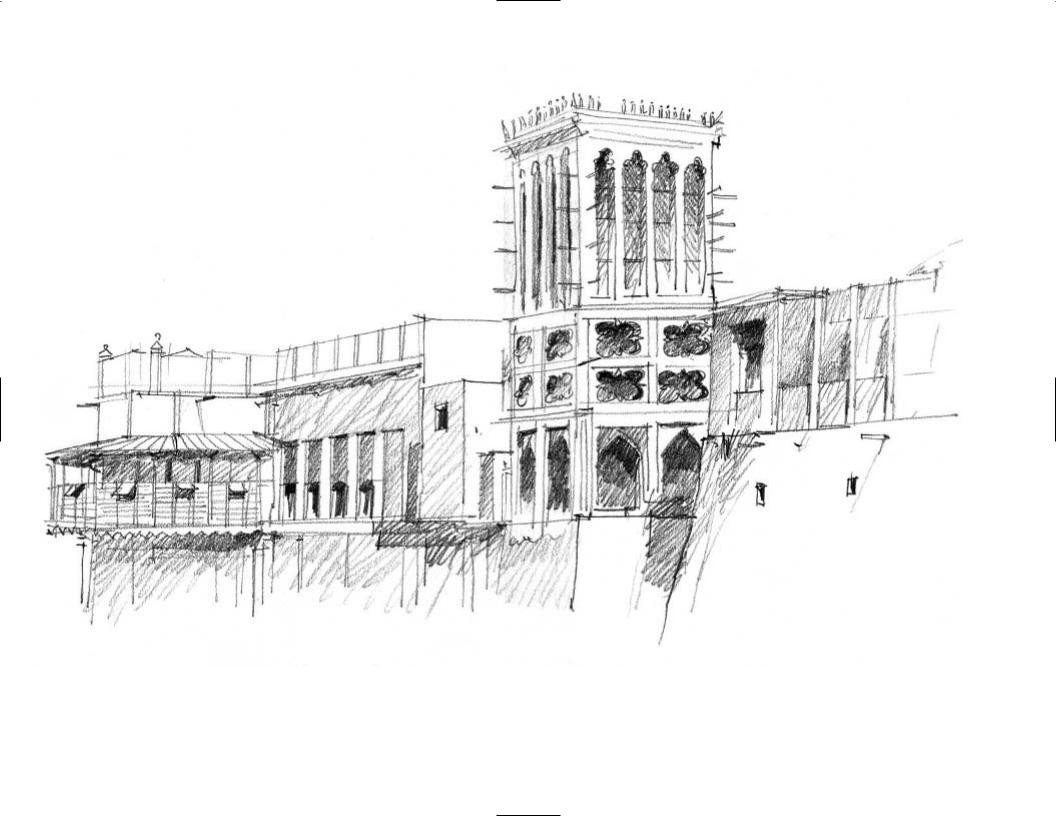
Windtower in Bahrain; 314 pencil
2
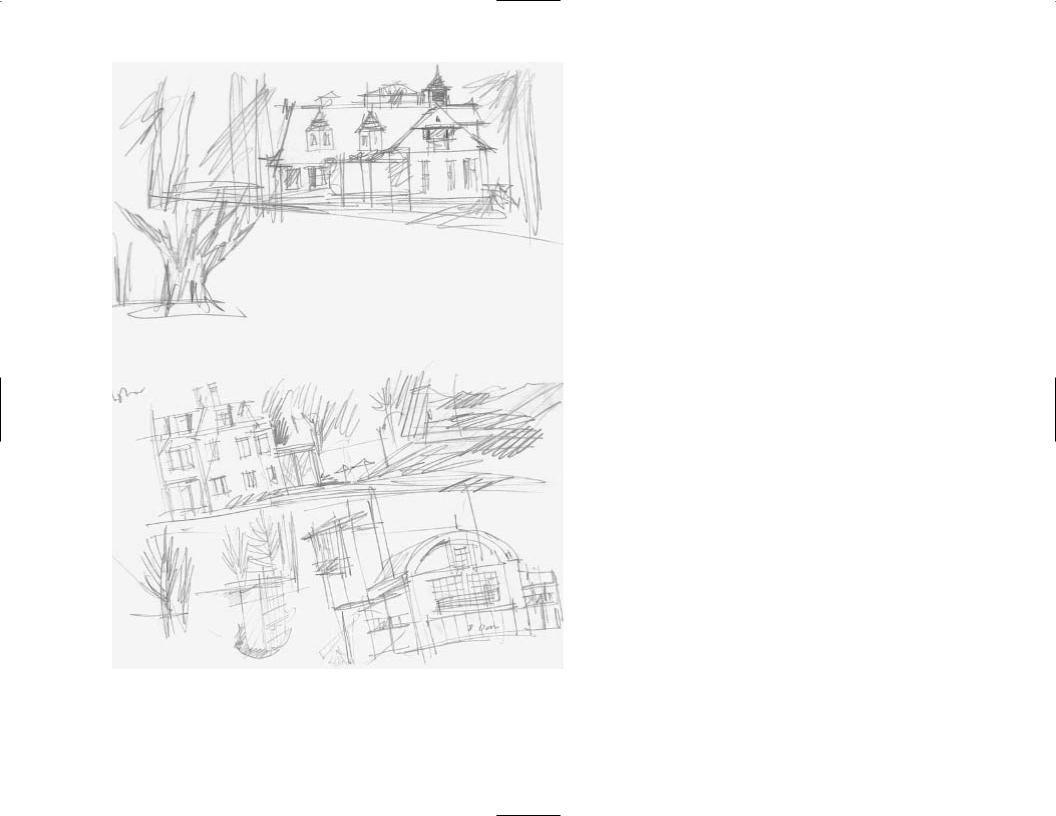
Why Sketching?
The trends of drawing in the last decade have included concerns about colors, styles, expression, and speed. These features are responses to new technology and our contemporary lifestyle. Yet these trends have little to do with the pedagogy of design education and drawing. I see sketching as the foundation of a strong design curriculum and a prerequisite course for all future designers. Sketching is about eye–hand coordination. We see, observe, and then record. Pencil becomes the medium through which images are transferred and documented. Pencil becomes the physical link between the eyes, the mind, and the hand. It happens to be the ideal sketching tool because it is easy to pick up and inexpensive to cultivate as a hobby. The flexibility and fluidity of pencil sketching is again another unique feature ideal for beginners. Knowledge and skills learned from pencil sketching are easily transferable to other design subjects, and the benefits are immeasurable and permanent.
Sketching field notes on the back of printed material.
It demonstrates the ease and simplicity of sketching.
3
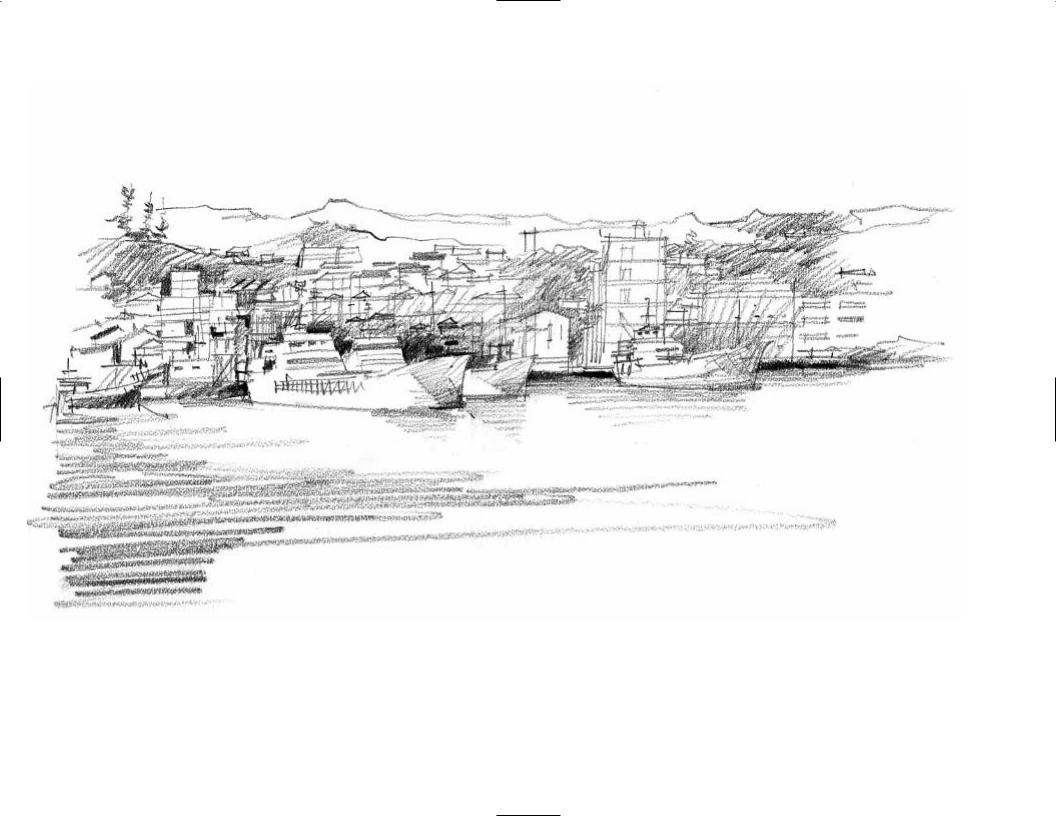
Ninomiya Harbor in Japan; ebony pencil, emphasizing contrast
4
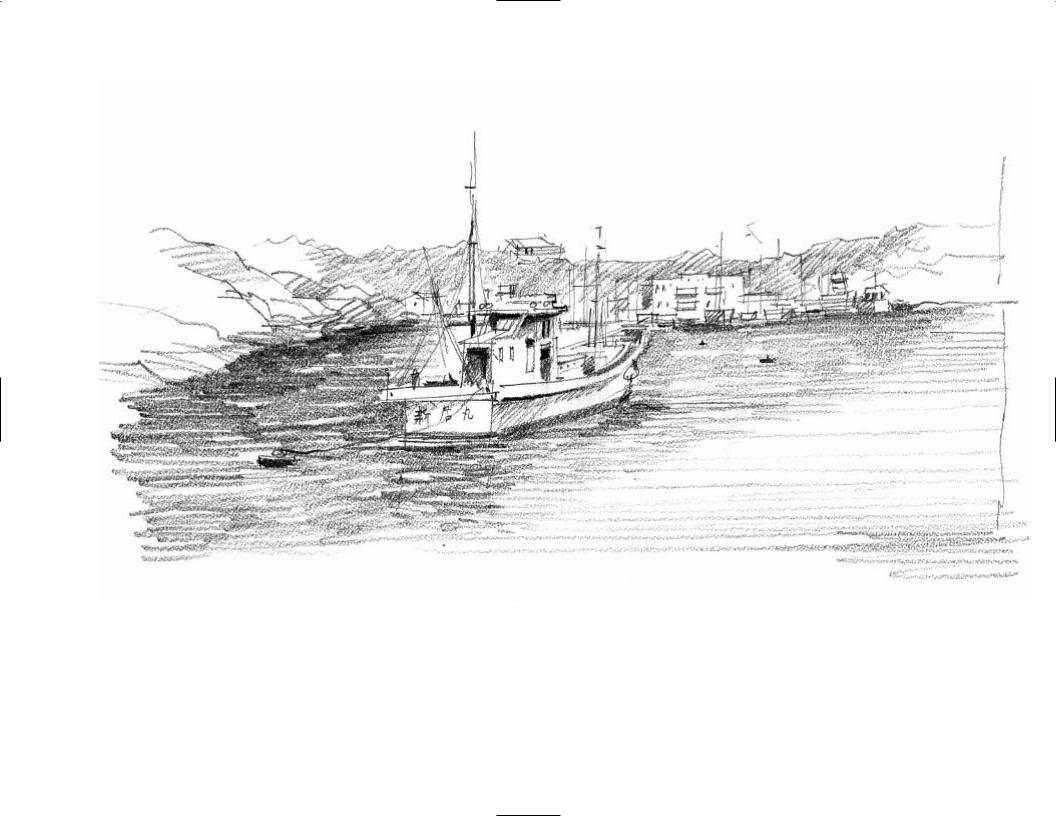
Sagami Bay in Japan; ebony pencil, emphasizing dark value
5
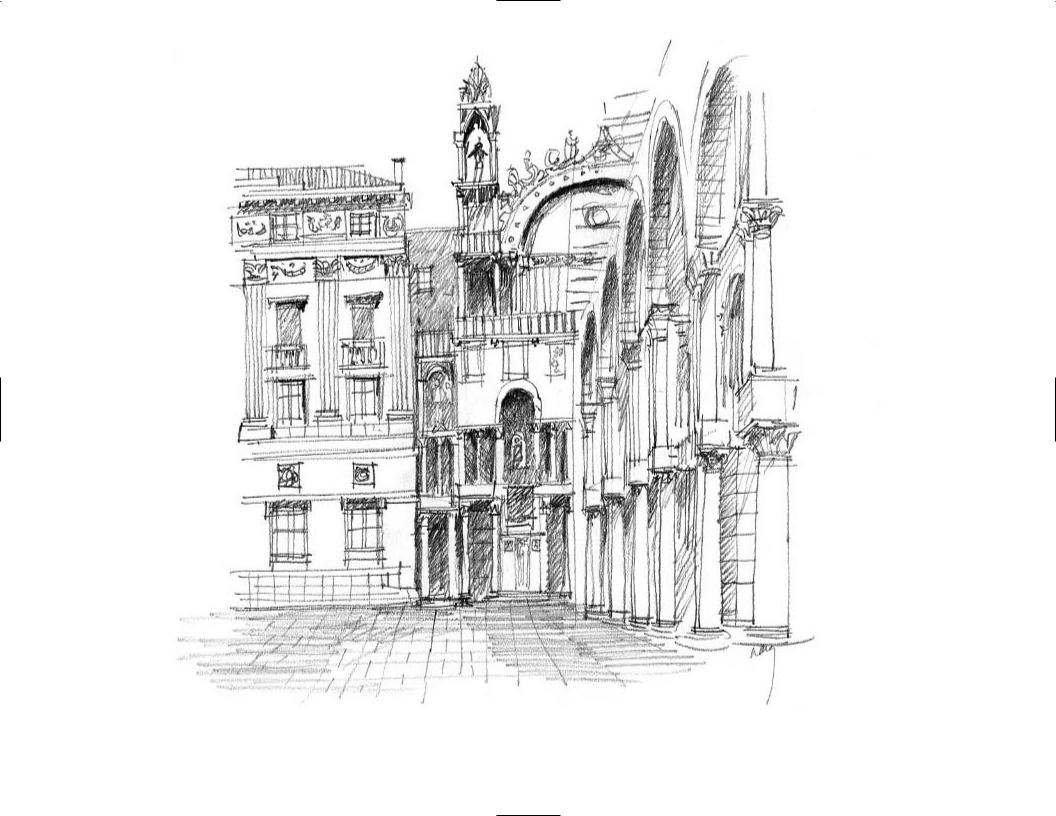
Venice, Italy; 2B pencil
6
